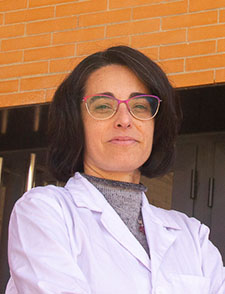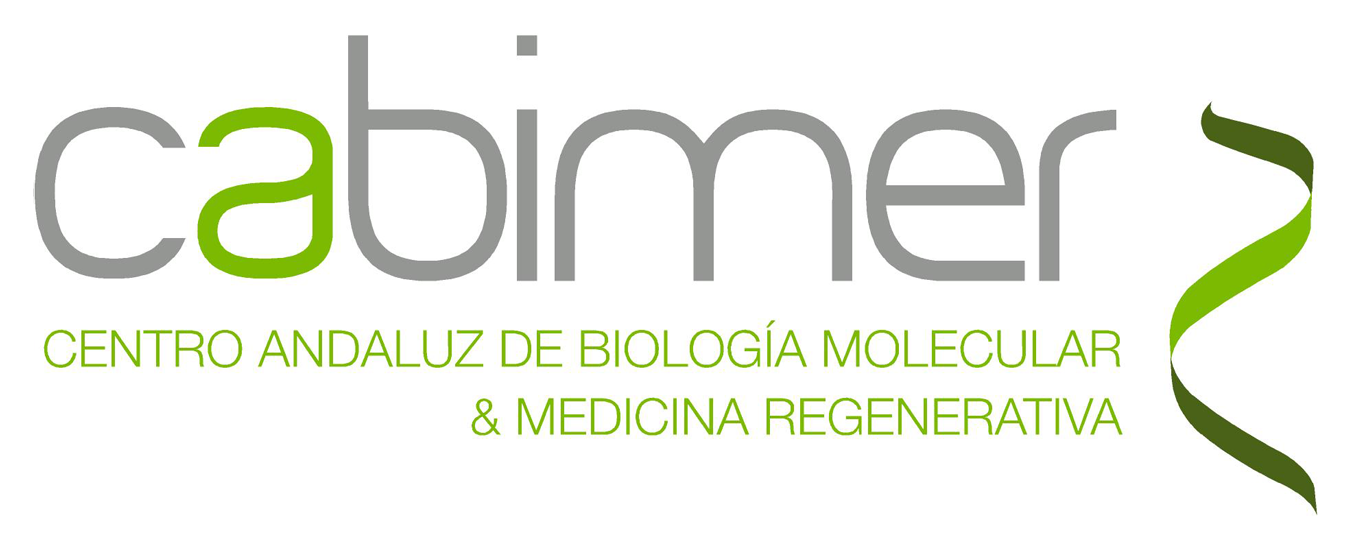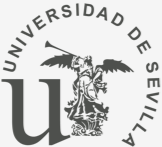
My career has focused on the study of the interconnection of nuclear processes and its relevance on human diseases such as cancer, neuromuscular dystrophies and developmental alterations. During my PhD in Dr. Aguilera’s laboratory at University of Seville, I studied the links between the mRNA metabolism and genetic instability demonstrating that the regulation of R-loops can prevent mutations leading to disease. I was supported by two PhD fellowships (FPU and Junta de Andalucía fellowship) and I mastered on molecular biology techniques. In this period, I published 9 articles, two as first author, that have accumulated more than 118 cites in high-impact journals (MBoC 2008, 2011, PloS Genet. 2009, JCB 2009, MCB 2011, EMBO 2011, NAR 2014).
Fascinated by how nuclear envelope (NE) influenced gene expression, in 2009 I moved to Dr. Askjaer’s laboratory, at Andalusian Centre for Developmental Biology (CABD), Spain, where I developed the DamID technique for the first time in C. elegans. With such technology, I contributed to find the molecular mechanism that explains how H3K9me facilitates the anchoring of DNA to the NE to promote gene silencing (Cell 2012). This study was part of collaboration with the laboratory of Dr. S. Gasser at FMI, Basel, where I learnt the bioinformatics tools necessary for the analysis of both microarray and high-throughput sequencing results. Besides, DamID allowed me to show that the NE protein emerin controls gene expression of muscle and neuronal genes opening new lines of research for the treatment of the human Emery-Dreifuss muscular dystrophy (Genome Biol 2014). Moreover, I supervised the work of students that led to the discovery of a new interaction between the nucleoporin Nup107 and the mitotic spindle assembly checkpoint protein MAD1 (MBoC 2012).
In 2012, my work with Dr. Martínez-Morales at CABD, analysing ChIPseq and RNAseq data identified key regulatory regions for the control of the gene networks that sustain the vertebrate body plan during development (Genome Res 2014).
In 2013, I moved to Dr. Groth’s laboratory at University of Copenhagen, to study how the epigenetic information was maintained during cell division. I was awarded with the prestigious Lundbeck Foundation grant. With this support, I developed a new technology called ChORseq, able to get, for the first time, genome-wide information of the epigenetic dynamics during DNA replication. (Mol Cell 2018 F1000Prime recommendation).
In 2016, I came back to Spain and collaborated with Dr. Cortés-Ledesma at Cabimer in the context of an ERC project studying the impact of DNA topology and DNA repair on DNA replication and with the Dr. Martín Broto at IBiS performing transcriptomic analysis to search for new predictive biomarkers relevant to develop new treatments for advanced sarcomas.
Now, as independent researcher at University of Seville I am studying how epigenetic changes occurring during DNA replication can impact transcription and mRNA metabolism as well to contribute to cancer progression.
My work is focused on understanding how cells maintain the epigenetic information and a correct cell function during cell division. During chromatin replication, the DNA molecule is duplicated and the epigenetic information is altered due to the combination of new and parental histones to maintain nucleosome density in the two newly synthetized DNA strands. Since the restoration of the epigenetic parental levels occurs in a mark and locus specific manner, my work aims to reveal the implications of the epigenetic cell cycle fluctuation on transcription and gene expression and whether the deregulation of the restoration process could contribute to human diseases.
Projects as principal investigator:
- Regulation of nuclear dynamics as a barrier for human diseases. Ayuda Ramón y Cajal (RYC2018-025485-I). Ministerio de Ciencia, Innovación y Universidadaes
- ncChIP-seq: A novel technology for the analysis of epigenome maintenance in proliferating cells (R165-2013-15306). Lundbeck Foundation.
Projects as researcher: (Last 5 years)
- New insights in the mechanisms of action of cisplatin in rhabdomyosarcomas: waking up an old drug for a fresh purpose. 2019
- Global dynamics of topoisomerase-induced DNA breaks (TOPOmics). 2014-2018
- Análisis a escala genómica de la respuesta transcriptional a tension morfogenética en neuroepitelios 2011-2015
- Martin-Broto J, CruzJ, PenelN, LecesneA, HindiA, LunaP, MouraDS, BernabeuD, de AlavaE, Lopez-GuerreroJA, DopazoJ, Peña-ChiletM, GutierrezA, ColliniP, KaranianM, RedondoA, Lopez-PousaA, GrignaniG, Diaz-MartinJ, MarcillaD, Fernandez-SerraA, Gonzalez-Aguilera C, Casali PG, Blay JY and Stacchiotti (2020) Pazopanib for treatment of typical solitary fibrous tumour: A multicentre single-arm, Phase II trial. The Lancet Oncology (In press).
- Reverón-Gómez N*, González-Aguilera C*, Stewart-Morgan KR*, Petryk N, Flury V, Graziano S, Johansen JV, Jacobsen JS, Alabert C and Groth A. (2018) Accurate recycling of parental histones reproduces the histone modification landscape during DNA replication. Cell. 72(2):239-249.e5 doi: 10.1016/j.molcel.2018.08.010. *EQUAL CONTRIBUTION. Zaugg J: F1000Prime recommendation of Reverón-Gómez N et al., Mol Cell. 2018 72(2):239-249.e5 in F1000Prime, 31 Oct 2018 doi: 10.3410/f.733853367.793552123.
- Feng Y, Vlassis A, Roques C, Lalonde ME, González-Aguilera C, Lambert JP, Zhao X, Alabert C, Johansen J, Paquet ER, Yang X, Gingras AC, Côté J, Groth A. (2016) BRPF3-HBO1 regulates replication origin activation and histone H3K14 acetylation. EMBO J. 35(2):176-92.
- Huang H, Strømme CB, Saredi G, Hödl M, Strandsby A, González-Aguilera C, Chen S, Groth A, Patel DJ (2015) A unique binding mode enables MCM2 to chaperone histones H3-H4 at replication forks. Nat Struct Mol Biol. 22(8):618-26.
- Santos-Pereira JM; Garcia-Rubio ML; González-Aguilera C; Luna R; Aguilera A. (2014) A genome-wide function of THSC/TREX-2 at active genes prevents transcription-replication collisions. Nucleic Acids Res. 42 – 19, pp. 12000 – 12014 .
- Tena JJ*, González-Aguilera C*, Fernández-Miñán A, Wittbrodt J, Gómez-Skarmeta JL, Martínez-Morales JR. (2014) Comparative epigenomics in distantly related teleost species identifies conserved cis-regulatory nodes active during the vertebrate phylotypic period. Genome Res. DOI: 1101/gr.163915.113 *Equal contribution.
- González-Aguilera C, Ikegami K., Ayuso C., de Luis A., Íñiguez M., Cabello J., Lieb JD. and Askjaer P. (2014) Genome-wide analysis links emerin to neuromuscular junction activity in C. elegans. Genome Biol. Feb 3;15(2):R21.
- González-Aguilera C, Palladino F and Askjaer P. (2013) C. elegans epigenetic regulation in development and aging. Funct. Genomics. DOI: 10.1093/bfgp/elt048.
- Towbin BD, González-Aguilera C, Sack R, Gaidatzis D., Kalck V., Meister P, Askjaer P, and Gasser SM. (2012) Step-wise methylation of histone H3K9 positions chromosome arms at the nuclear envelope in C. elegans embryos. 150, 934-47.
- González-Aguilera C., and Askjaer P. (2012) Dissecting the NUP107 complex: Multiple components and even more functions. Nucleus 1;3(4), 1-9.
- Rodenas E., González-Aguilera C., Ayuso C., and Askjaer P. (2012) Dissection of the Nup107 nuclear pore subcomplex reveals a novel interaction with spindle assembly checkpoint protein Mad1 in Caenorhabditis elegans. Biol. Cell 23(5):930-44.
- González-Aguilera, C., Tous, C., Babiano R., de la Cruz J., Luna, R:, and Aguilera, A (2011) Nab2 functions in the metabolism of RNA driven by polymerases II and III. Biol. Cell. 22(15):2729-40.
- Tous C., Rondon A.G:, García-Rubio M., González-Aguilera C., Luna R. and Aguilera (2011) A novel in vivo assay identifies new roles for the Nup84 complex and RNA processing factors in transcription elongation. EMBO J. 30(10):1953-64.
- Jimeno, S., Tous, C., Ranes, M., González-Aguilera, C., Marín, A., and Aguilera, A. (2011) A new eukaryotic complex,Thp3-Csn12, with a role in transcription elongation Mol. Cell. Biol. 31(4):674-85.
- Faza, MB, Kemmler, S, Jimeno S, González-Aguilera C, Aguilera, A, Hurt E., and Vikram Govind Panse. (2009) Sem1 is a functional component of the nuclear pore complex associated mRNA export machinery. Journal of Cell Biology 184, 833-846.
- Luna, R. González-Aguilera, C. y Aguilera A. Transcription at the proximity of the nuclear pore: A role of the Thp1-Sac3-Sus1-Cdc31 complex. (2009) RNA Biology 6, 1-4.
- Gaillard H, Tous C, Botet J, González-Aguilera C, Quintero MJ, Viladevall L, García-Rubio ML, Rodríguez-Gil A, Marín A, Ariño J, Revuelta JL, Chávez S, y Aguilera A. (2009) Genome-Wide análisis of factors affecting transcription elongation and DNA repair: a new role for PAF and Ccr4-Not in transcription-Coupled Repair. PLoS Genetics, e1000364.
- Luna, R., Gaillard, H., Gonzalez-Aguilera, C. and Aguilera, A. (2008) Biogenesis of mRNPs: integrating different processes in the eukaryotic nucleus. Chromosoma 117(4), 319-331.
- Gonzalez-Aguilera, C., Tous, C., Gomez-Gonzalez, B., Huertas, P., Luna, R., and Aguilera, A. (2008) The THP1-SAC3-SUS1-CDC31 complex works in transcription elongation-mRNA export preventing RNA-mediated genome instability. Biol. Cell 19(10), 4310-4318.








